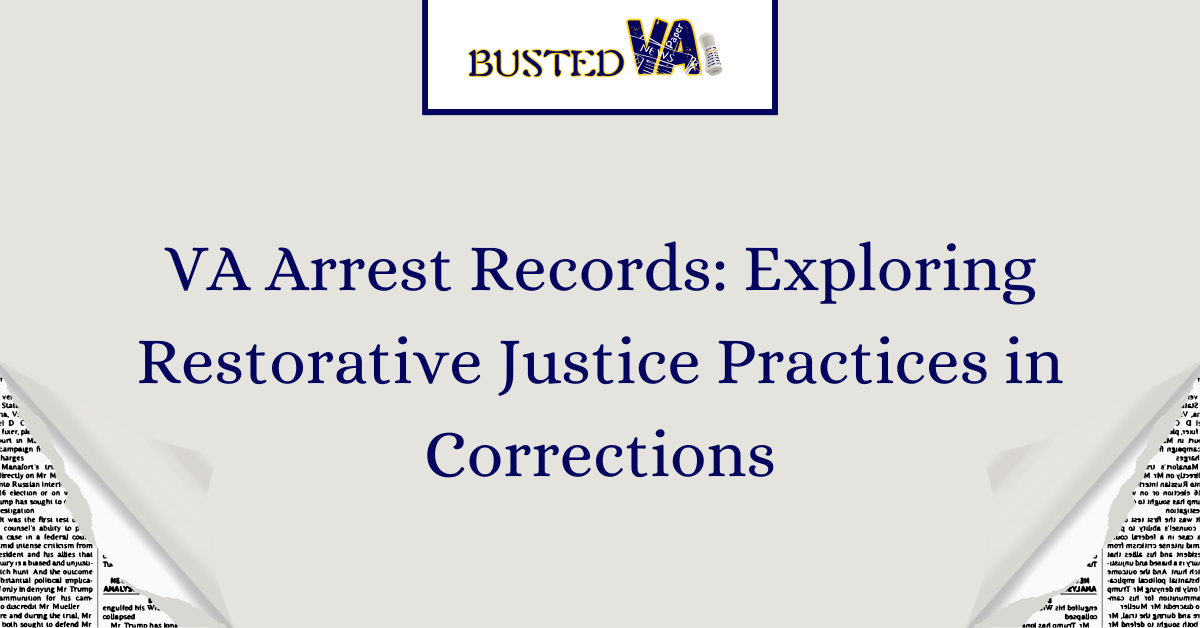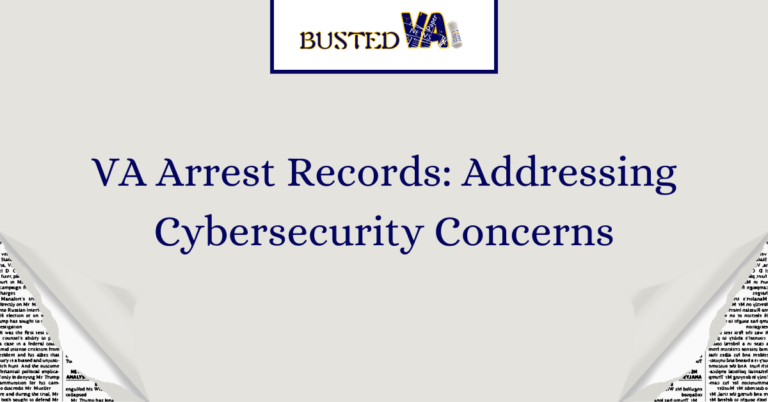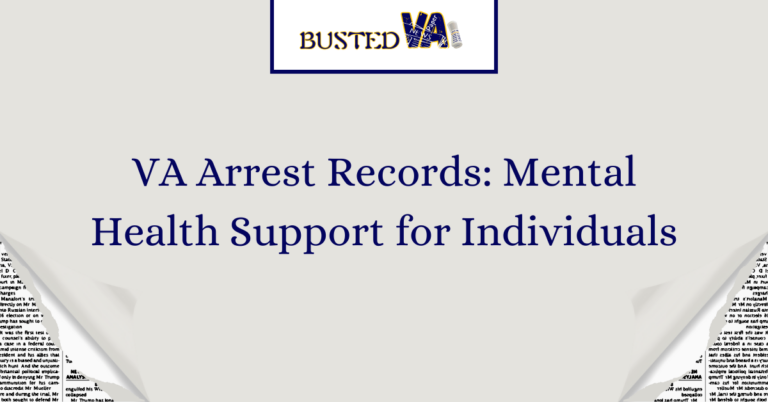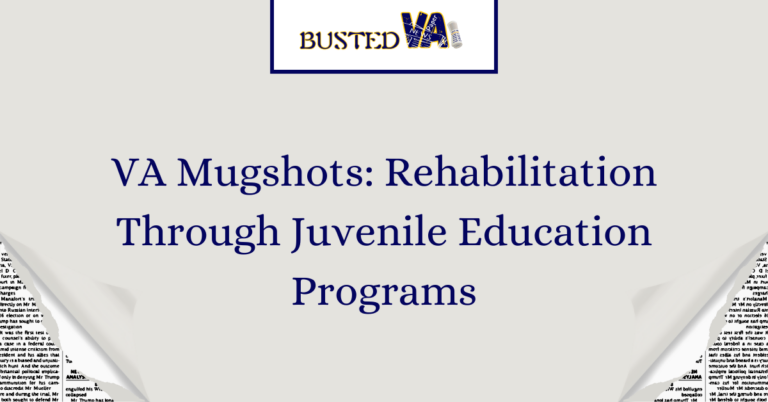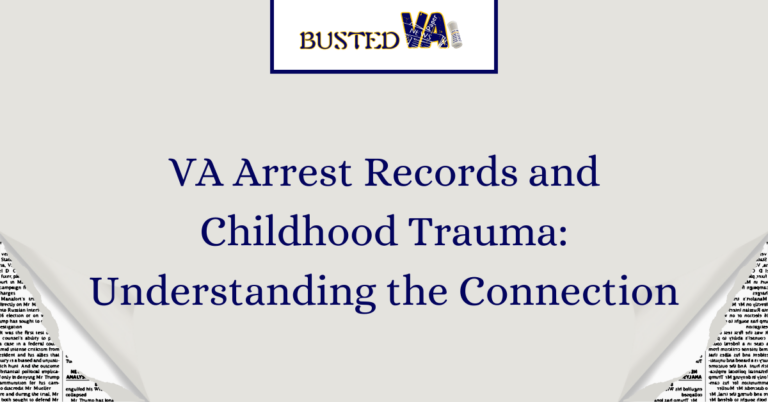VA Arrest Records: Exploring Restorative Justice Practices in Corrections
In today’s society, understanding the nuances of Virginia (VA) arrest records is crucial, especially when considering the evolving landscape of justice systems. This article delves into the significance of comprehending VA arrest records within the framework of restorative justice practices.
Understanding VA Arrest Records
VA arrest records encompass a wealth of information pertaining to individuals’ encounters with law enforcement. These records typically include details such as the individual’s name, age, address, charges, and any accompanying documentation related to the arrest. While these records serve administrative purposes, they also hold substantial implications for individuals’ lives, including employment opportunities, housing, and social stigma.
Restorative Justice: An Overview
Restorative justice stands in contrast to traditional punitive measures, emphasizing reconciliation and healing over punishment. Rooted in principles of empathy, accountability, and community involvement, restorative justice seeks to address the underlying causes of crime while fostering positive outcomes for all involved parties.
The Need for Restorative Justice in Corrections
The current correctional system often falls short in addressing the complex needs of both offenders and victims. Traditional punitive measures tend to perpetuate cycles of harm and fail to address the underlying issues that contribute to criminal behavior. Restorative justice offers a more holistic approach, focusing on repairing harm, promoting accountability, and facilitating the rehabilitation of offenders.
VA Arrest Records and Restorative Justice
VA arrest records play a significant role in shaping perceptions and outcomes within the criminal justice system. Individuals with arrest records often face stigma and discrimination, hindering their reintegration into society. By adopting restorative justice practices, communities can challenge these narratives and offer individuals the opportunity for redemption and growth.
Implementing Restorative Justice Practices
Several successful restorative justice programs exist within the correctional system, ranging from victim-offender mediation to community-based reentry initiatives. However, implementing these practices on a larger scale requires overcoming various challenges, including resource constraints, institutional resistance, and the need for cultural shifts within the legal framework.
Benefits of Restorative Justice for Individuals
Restorative justice empowers individuals to take ownership of their actions and actively participate in the healing process. By providing opportunities for dialogue and restitution, restorative justice fosters personal growth and accountability, ultimately paving the way for successful reintegration into society.
Benefits of Restorative Justice for Communities
Beyond its individual benefits, restorative justice holds significant advantages for communities as a whole. By promoting dialogue and collaboration among stakeholders, restorative justice initiatives strengthen social bonds, build trust, and contribute to safer, more resilient communities.
Challenges and Criticisms
Despite its merits, restorative justice is not without its challenges and criticisms. Practical limitations, such as resource constraints and logistical hurdles, can impede the implementation of restorative justice practices. Additionally, ethical concerns regarding fairness, coercion, and the potential for re-traumatization require careful consideration and mitigation strategies.
Future Directions in Restorative Justice
As society continues to evolve, so too must our approach to justice. Innovations in restorative justice, including the integration of technology and the expansion of community involvement, hold promise for addressing the complex needs of individuals and communities affected by crime. By embracing these advancements and adapting to changing circumstances, we can move closer to realizing a more just and equitable society.
FAQs
What is restorative justice?
Restorative justice is a philosophical approach to addressing harm and wrongdoing that focuses on repairing the harm caused to individuals and relationships rather than solely punishing offenders. It emphasizes the active involvement of all parties affected by a crime, including the victim, offender, and community, in a collaborative process to find resolution and restore balance. This alternative to traditional punitive justice systems seeks to foster accountability, understanding, and healing while promoting the reintegration of offenders into the community.
What are the principles of restorative justice?
Several key principles guide the practice of restorative justice:
- Voluntariness: Participation in the restorative justice process is typically voluntary for all parties involved.
- Encounter and Dialogue: Offenders and victims are given the opportunity to communicate and express their perspectives, fostering understanding and empathy.
- Accountability: Offenders take responsibility for their actions, acknowledging the harm caused and working toward making amends.
- Reparation: The focus is on repairing the harm inflicted, and this may involve restitution, community service, or other forms of compensation.
- Inclusivity: The involvement of all stakeholders, including the community, is encouraged to address the broader impact of the crime.
How does restorative justice promote victim empowerment?
Restorative justice aims to empower victims by giving them a more active role in the justice process. Traditional criminal justice systems often marginalize victims, but restorative justice provides them with a platform to share their experiences, express their needs, and actively participate in shaping the resolution. This empowerment can contribute to the healing process for victims, as they have a direct say in the outcomes and actions taken by offenders to make amends for the harm caused.
Why is community engagement important in restorative justice?
Community engagement is integral to restorative justice as it acknowledges the broader impact of crimes on the community. Involving the community in the process can foster a sense of shared responsibility, accountability, and collective healing. Community members may contribute to the resolution process, offer support to victims and offenders, and participate in the reintegration of offenders into society. This engagement helps build stronger social bonds, trust, and a shared commitment to preventing future harm.
What are the benefits of restorative justice?
Restorative justice offers several benefits:
- Increased Satisfaction: Participants often express higher levels of satisfaction with the restorative justice process compared to traditional justice systems.
- Reduced Recidivism: Studies suggest that restorative justice approaches may be associated with lower rates of reoffending.
- Healing and Closure: Victims may find a sense of healing and closure by actively participating in the process and witnessing offenders taking responsibility for their actions.
- Community Building: Restorative justice fosters community cohesion, as it involves community members in addressing and preventing crime, contributing to a safer and more connected society.
- Cost-Effective: In some cases, restorative justice processes can be more cost-effective than traditional court proceedings, particularly when considering long-term benefits and reduced recidivism rates.

